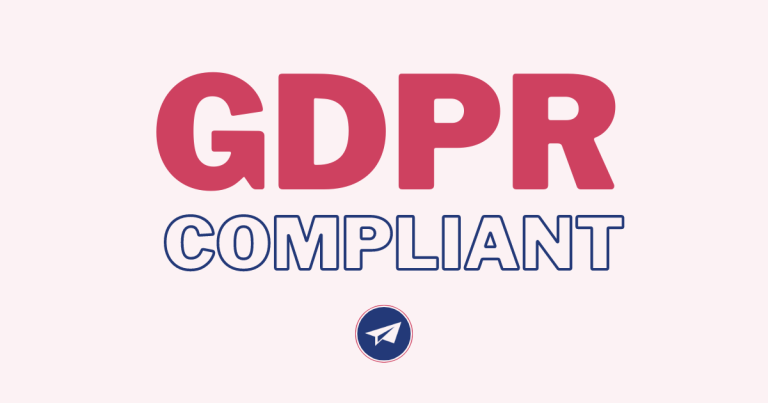Quantifiable metrics allow you and your team to measure and compare the effectiveness of almost everything in your business. By measuring how customers respond to your products, services, and processes, you find ways to improve and grow.
One of the most popular metrics to follow, particularly in customer service, is Net Promoter® Score (NPS). In this guide, we look at what NPS is, how to measure it, why it’s useful, and whether it has any limitations.
What is the Net Promoter® Score (NPS)?
The Net Promoter Score is a metric used to measure customers’ loyalty and satisfaction. The NPS is generated from a single survey question that asks the customer how likely they are to recommend your company, product, or service to others. It was developed by author and business strategist Fred Reichheld.
Transactional vs. Relational NPS
NPS surveys can be split into two types, transactional and relational NPS.
What is Transactional Net Promoter Score?
Transactional NPS surveys are performed with the goal of getting feedback on specific processes after the customer has gone through them. For example, you can ask customers how they felt about the customer support they received after they called for a technical support issue.
Transactional NPS works well in many situations. You can gauge how supported customers feel during the onboarding phase or ask about their satisfaction with using a particular product. You can test whether product updates have been a net positive for customers. In fact, the effect on customer satisfaction for just about any business transaction can be measured using transactional NPS surveys.
What is Relational Net Promoter Score?
Relational NPS surveys are performed on a regular basis, such as monthly, quarterly, or annually. By asking the same question each time, you can identify changes in customer sentiment. Relational NPS surveys can be used to check the health of customer relationships and are suitable for overall benchmarks of the company’s success.
Understanding the “Why” Behind your NPS Ratings
The fundamental question of whether the customer is satisfied does give you valuable metrics, particularly when you can compare it against past performance or use A-B testing to see which process works the best.
You can gain much more specific information if you add an option for customers to leave more details on why they chose the score they did. Many people will ignore this option, but those who have had a particularly good or bad experience often feel compelled to tell you why they felt that way.
This additional information can still be collated automatically if you use checkboxes so the customer can choose from several options for improving the service.
If you use text boxes instead, asking customers to explain in detail their reason for putting down a score, you can still automate the collection of this data with natural language processing and artificial intelligence. You can receive reports highlighting some of the terms customers frequently use in their feedback.
Customer sentiment processing can be further automated, so you can see immediately that people have highlighted issues with the speed of delivery or lack of call center agent knowledge, for example.
How to Calculate the NPS
One reason that NPS is popular is its simplicity. NPS calculations always start by asking the customer a variation on the following question:
“Based on your experience today, how likely would you recommend us to your friends or colleagues?”
Customers are usually asked to rank this likelihood on a scale of 0-10. The NPS calculation places respondents into three groups based on their responses:
- 0-6—These customers are considered detractors, actively dissatisfied with your company. Detractors are potentially harmful to your business, as they are the most likely to leave negative reviews online or spread negative word of mouth, damaging your brand.
- 7-8—Respondents who offer a score of seven or eight are classed as passives. They are generally happy with your products and services but won’t go out of their way to recommend you to others. They can still be enticed away to competitors if the right offer comes along.
- 9-10—Those who show satisfaction of nine to ten are your promoters. They will most likely return to your brand again to make more purchases. They’re also likely to bring in new customers through promotion. They can be considered as offering your company a high lifetime value.
Net Promoter® Score Formula
Your NPS score is the percentage of promoters minus the percentage of detractors. The worst possible NPS is -100, and the best score is 100.
Net Promoter® Score Calculation Example
Let’s put this all together into an example.
You want to gauge the effect a new customer service process has on customer satisfaction, so you use NPS to ask 500 customers about their experience after using this process.
50 customers respond with a score between 0 and 6. 350 customers respond with a score of 7 or 8. The remaining 100 customers give the process a score of 9 or 10.
- The percentage of promoters is (100 / 500 * 100) = 20%.
- The percentage of detractors is (100 / 500 * 50) = 10%.
- The NPS is (20 – 10) = 10.
Interpreting whether this is a good or bad NPS is a different challenge we will explore later. In this case, you could compare the NPS score to the score customers gave before implementing the new customer service process. This way, you can see how positive or negative the change has been to customer satisfaction.
What is the Employee Net Promoter Score (eNPS)?
Employee NPS (eNPS) is a similar metric to NPS, but it refers to your employees instead of your customers. It measures how likely your employees are to recommend your company to their friends and family. eNPS is often considered a rating for the employee’s loyalty to the company, but it’s more than that.
eNPS isn’t simply asking employees if they’re satisfied with their job; it’s asking whether employees would recommend the company to others.
Employees happy within their position may still respond with a low eNPS score if they believe the company isn’t providing a valuable service to customers.
The employees of an organization are often more likely to see the flaws in processes than customers. Therefore, eNPS ratings are often lower than NPS ratings in surveys. Employees expect more from the organization and generally want the company to succeed and prosper.
It’s essential with eNPS surveys to allow employees to discuss why their rating is high or low. They may highlight problems with internal processes that are causing them to be inefficient at work. They could specify that they don’t agree with certain business practices on an ethical level or don’t feel welcomed in the workplace. They might not want to recommend your company because it’s too expensive compared to your competitors, or they’re aware of glaring product issues.
By analyzing the specific feedback you get from eNPS surveys, you can find ways to improve your service. eNPS surveys can therefore have a knock-on effect on your NPS scores.
The Benefits of Measuring NPS
NPS is a Simple, Reliable Indicator
NPS is a reliable indicator of customer satisfaction and loyalty. It’s simple to measure, doesn’t require much of the customer’s time, and it’s a qualitative measurement you can use to compare different strategies and parts of your business.
For example, let’s assume customers who speak with one agent leave an average NPS of 84, whereas a second agent only manages to get an average NPS of 22. This tells us that the customer service the first agent can provide is much better than the second agent’s.
NPS Requires Context
But here’s the important thing—that NPS score alone doesn’t tell us why the second agent isn’t delivering such as good customer experience.
There are a whole host of reasons why the first agent is performing better. Perhaps they are more experienced, with better training and knowledge. Maybe they better understand the industry. It could be that they have better on-phone etiquette or access to options that the second agent doesn’t have the authority to provide. It could even be that that first agent is promising service your company can’t feasibly deliver.
These are just some examples showing why it’s crucial to analyze other data that can give context to why an NPS score is high or low. Usually, this is done by asking detractors and promoters why they are satisfied or dissatisfied.
NPS Identifies Pain Points
By getting NPS scores from different parts of the customer journey, you can get a big picture of how every step influences customers’ perception of your company.
You can set up NPS surveys to automatically ask a small percentage of your customers whether they would recommend your company after specific steps have been performed.
Another option is always to offer the ability for customers to leave feedback on web pages and emails if they feel compelled to. This allows customers to leave NPS scores without negatively affecting their experience.
Over time, you should see trends where NPS scores dip and rise. For example, customers may respond with a high average NPS score after signing up for an email newsletter on your website but leave a poor NPS score after having received the email newsletter. This immediately signals that your focus should be on why the newsletters are being received so poorly.
Identifying Customer Churn Risk
It can cost up to 5 times as much to attract a new customer than to retain an existing one. Increasing customer retention rates by 5% typically results in increased profits between 25% and 95%.
Therefore, identifying customers at risk of leaving your business behind to work with one of your competitors instead is so important. The relationship with previously happy customers dissatisfied with your products or service can be salvaged if you act quickly. This is where NPS is useful for identifying customers sliding down the satisfaction scale.
On the macro scale, NPS is useful for finding the trends that cause promoter scores to drop so you can identify ways to retain your customer base.
Find Your Core Customer Base
At the other end of the scale, it’s helpful to identify the customers that respond with exceptionally high NPS scores. For one, it can suggest these are your core customers, making marketing to similar groups a priority. You may find new avenues for sales in groups you hadn’t considered before.
The information these customers can offer you on why they like your company can inform how you position yourself in the market. Are they impressed at the fast speed of your service, or do they value your personal approach? These are the types of things you can boost in your marketing as your unique selling proposition.
Use Customer Feedback as Social Proof
With permission, you can use your customers’ positive feedback as social proof.
Beyond placing positive reviews on your website and in your literature, you can consider offering special access to influencers and industry figureheads so they can boost your brand even more in social media and publications.
Get More Recommendations
By measuring and improving NPS, more and more of your passive customers will become promoters. They’ll mention your brand to friends and family, post positively on social media, and engage with others on your community forums.
Often, this results in a feedback loop. As your NPS scores trend more positively, the positive discussions of your company online outweigh the negative, and increasing numbers of people are drawn to your brand.
What is a Good Net Promoter Score (NPS)?
Cultural and regional differences can make comparing NPS scores across companies problematic. Subtle differences in how and when companies perform their NPS surveys, even if they keep their internal testing consistent, will result in different average NPS scores. So, we recommend caution when looking for absolutes in NPS scores.
Bain & Company, joint creators of the NPS metric, state that any positive NPS score can be considered good, above 20 is great, and above 30 is terrific. Any NPS score over 80 is almost unheard of.
Another way to look at an NPS score is as follows:
- -100-0—More than half of your customers are having a bad experience interacting with your company. Undoubtedly, some of these customers will be spreading negative word about your products, services, or processes, and immediate action is required.
- 1-30—Opportunities to improve customer service abound. However, you do have some promoters, so the current situation can be turned around with some work.
- 31-50—Most relatively successful companies get NPS scores in this ballpark. The customer experience is good, and many promoters are willing to return to your business repeatedly.
- 50-70—Your customer experience excels, and it shows. The vast majority of your customers are willing to sing your brand’s praises, amplifying a positive perception of your company.
- 70-100—This level of customer satisfaction is reserved for the best in the business.
Industry-Specific Average NPS
While we caution against comparing your NPS scores to other companies, it’s interesting to look at industry averages. According to benchmark data from Retently, these are the average NPS scored per industry:
- Insurance—71
- Consulting—68
- B2C Ecommerce—62
- B2B Technology and Services—61
- Retail—61
- Financial services—56
- Construction—45
- Logistics and Transportation—43
- B2B Software and Software-as-a-Service—40
- Healthcare—38
- Communications and Media—29
- B2B Cloud and Hosting—25
- Internet Software and Services—4
How Can I Improve my Net Promoter® Score?
Getting NPS Right
Improving NPS scores starts with getting an excellent understanding of where your NPS stands now. Ask all customers or a segment of customers for their experience with your company. Provide an incentive to repeatedly offer feedback by responding to all negative feedback and showing the customer you believe their input is valuable.
Track your score trends by regularly collecting feedback. Allow customers to specify where the pain point is so you can begin drilling down to the root cause of dissatisfaction.
Follow up with both detractors and promoters to get specific details on the reasons behind their scores. Promoters can offer excellent insights into why they feel connected to your company. These insights can be used to improve internal processes and marketing.
Accepting detractors’ criticisms and carefully considering with everyone in the company how you can best alleviate the pain points is an important act of reflection for a business looking to improve NPS.
Using the right tools to analyze NPS data is crucial, as it saves you from trawling through thousands of pages of unstructured text feedback to find the trends affecting NPS in your business.
Your NPS Improvement Plan
Improving NPS needs buy-in from all involved. Everyone from senior management down to individual team members must understand why improving NPS is so vital and that you’re all working together to meet a singular goal.
Make sure that everyone knows they are responsible for their role in the customer experience. Foster a culture of action and responsibility, allowing employees to take charge and make meaningful changes. Discuss how improving NPS is a group effort.
As the NPS improvement plan evolves, keep everyone in the loop on what the priority is and why. Be clear about the steps you plan to take to improve NPS and why these will work. Being transparent results in better buy-in, and you will receive feedback from staff on how to best improve processes.
Each department should have its own methods for measuring NPS, and it should be given some autonomy to make changes that improve its individual NPS scores.
The Limitations of NPS
NPS Alone is Not Enough
Judicious use of NPS scoring shows us when and where customer satisfaction is positively or negatively affected, but it doesn’t show us why. This is why we recommend always pairing NPS with options that allow customers to leave more specific feedback so you can get the full context of why they were pleased or displeased.
NPS Only Offers Information on Existing Customers
One of NPS’s weaknesses is that it can only give you information from the current customers. It can’t tell you much about non-customers or potential markets.
Though it’s a reasonable jumping-off point, your current customer base isn’t necessarily the best target for your future products and services. Perhaps you haven’t yet found the best niches, but if you become laser-focused on appeasing your older customers, you may never find them.
In extreme cases, if you focus on NPS alone, you could find a vocal minority of your current customer base begin influencing decisions on the direction of the company that are detrimental to the business in the long run.
Passive Customers are Often Ignored
NPS focuses on detractors and promoters, whereas passive customers are often ignored. Managers often take steps to placate detractors or boost promoters, but it’s a mistake to forget about average customers.
In truth, there’s no such thing as a “passive” customer, inactive and happy with the status quo. Care should be taken to improve the customer experience of those who are only somewhat satisfied with the service.
Cultural Differences Affect NPS Scoring
The ratings customers and employees are likely to give to the companies they use and their employers vary considerably based on cultural differences. The citizens of some countries are more likely to be resistant to criticizing their employer in eNPS surveys than in others, for example.
Considering this, it’s important not to use eNPS to directly compare workforces in different regions or countries. The information divorced from the context will provide poor insight into the differing performance of each zone.
NPS Doesn’t Consider Competitive Dynamics
NPS scores can rise and fall based on events outside the company’s control. For instance, if a competitor floods the market with cheap goods, your NPS scores can suffer as you are no longer perceived as offering excellent value. This is outside your control but can be misconstrued as a problem with an internal business process if care isn’t taken about using NPS scores with the appropriate context.
Conclusion
Net Promoter® Score (NPS) is a simple metric for measuring the satisfaction and loyalty of customers by asking them how likely they would be to recommend your company to their friends and family.
Transactional NPS is used to test the effect of a business transaction on customer satisfaction, whereas relational NPS is used to see changes in customer sentiment over time.
NPS is popular because it’s simple to understand and can be used to identify pain points in the customer journey. You can use it to find customers at risk of churn and likely to be great ambassadors for your brand. Through comparison, you can use NPS to see which customer service representatives need help delivering better service and which business processes are the most effective with A-B testing.
NPS scores can show you where customer satisfaction is lacking, but they can’t explain why. NPS must be paired with additional questioning and research that asks customers why they feel the way they do. You can only make substantive informed changes to processes to improve overall customer satisfaction and brand loyalty.
Did you like the post?
You might also like:

Surveypal
Everything you need to lead and improve your customer experience. Learn more at surveypal.com, or







